The rhythmic hammer strikes echo through narrow streets where sparks fly and red-hot metal takes shape under skilled hands, creating a soundtrack that’s echoed through these communities for centuries. Traditional blacksmith villages represent some of humanity’s oldest industrial traditions, where master craftsmen still transform raw iron into tools, weapons, and artwork using techniques passed down through generations who understood that metalworking requires both physical strength and artistic vision. These communities have survived the industrial revolution by specializing in quality and tradition that mass production simply cannot replicate.
Visiting these places feels like stepping into a living museum where ancient skills remain economically viable. Here’s a list of 15 traditional blacksmith villages where centuries-old techniques continue creating modern marvels.
Gyokusendo – Niigata Prefecture, Japan

This mountain village has specialized in creating traditional Japanese tools for over 400 years, where families still forge the knives, chisels, and agricultural implements that professional craftsmen consider the world’s finest. The village’s isolation in snowy mountains preserved metalworking techniques that urban workshops abandoned when mass production made traditional methods seem obsolete.
However, serious woodworkers and chefs now seek these handmade tools specifically for their superior quality. Each workshop here maintains its own secret techniques for heat treatment and tempering that create steel with characteristics modern metallurgy struggles to replicate through industrial processes.
Thiers – Auvergne, France

Known as France’s knife capital, this medieval town perched on volcanic cliffs has produced goods since the 13th century while maintaining guild traditions that ensure quality standards few modern manufacturers can match. Local workshops still operate water-powered grinding wheels along the Durolle River—the same renewable energy source that medieval craftsmen used to shape blades for kings and commoners alike.
The town’s knife museum showcases centuries of innovation while contemporary artisans continue developing new designs that honor traditional methods while meeting modern aesthetic and functional requirements.
Like Travel Pug’s content? Follow us on MSN.
Samarkand – Uzbekistan

Silk Road trading routes made this ancient city a metalworking center where craftsmen developed techniques for creating decorated weapons and household items that combined Central Asian, Persian, and Chinese aesthetic traditions. Traditional workshops here still produce handmade knives with distinctive curved blades and intricate handle decorations that reflect the region’s complex cultural heritage, though modern artisans also create contemporary designs that appeal to international collectors.
The city’s metalworking district operates much as it has for centuries, with masters training apprentices in techniques that require years to perfect.
Toledo – Castilla-La Mancha, Spain

This hilltop city became Europe’s premier sword-making center during medieval times when Toledo steel earned legendary status among knights and warriors throughout the continent. Modern workshops continue producing traditional Spanish swords, knives, and decorative metalwork using techniques that haven’t changed substantially since the Reconquista, though contemporary artisans also create modern cutlery and artistic pieces that honor historical methods.
The city’s metalworking heritage includes influences from Roman, Visigothic, Muslim, and Christian traditions that created unique fusion styles still practiced today.
Mandarawa – Nepal

This Himalayan village specializes in creating traditional Nepalese khukri knives, where every household participates in different aspects of production, from mining local iron ore to finishing completed blades. The community’s cooperative approach means children learn metalworking skills alongside farming and other traditional occupations, creating cultural continuity that ensures ancient techniques survive even as modern technology transforms surrounding regions.
Village smiths still use traditional water-powered hammers and charcoal forges while maintaining spiritual practices that consider metalworking a sacred craft requiring both technical skill and proper ritual observance.
Like Travel Pug’s content? Follow us on MSN.
Wazirabad – Punjab, Pakistan
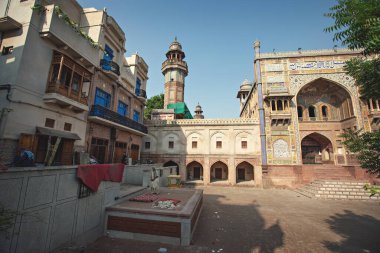
This industrial city has specialized in cutlery production for over 500 years, where traditional methods coexist with modern manufacturing techniques that serve both domestic and international markets. Local workshops still train apprentices in traditional forging methods while adapting designs to contemporary needs, creating products that combine historical craftsmanship with practical functionality that modern consumers appreciate.
The city’s metalworking heritage reflects centuries of Mughal, Sikh, and British influences that created unique design traditions still evident in contemporary production.
Gyeongju – South Korea

Ancient capital of the Silla Kingdom, this city maintains traditional Korean metalworking techniques where craftsmen create both ceremonial items and practical tools using methods that date back over 1,000 years. Local workshops specialize in traditional Korean knives and agricultural tools while also producing contemporary kitchenware that applies historical tempering and forging techniques to modern designs, proving that ancient methods can enhance rather than limit contemporary creativity.
The city’s cultural significance as a UNESCO World Heritage Site has helped preserve metalworking traditions that might otherwise have disappeared during Korea’s rapid modernization.
Kapan – Armenia
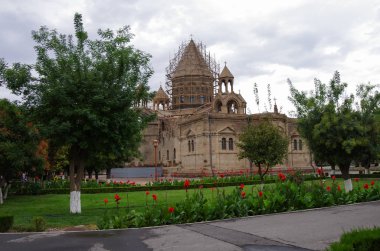
This mountain town has produced traditional Armenian metalwork for centuries, where family workshops still create the distinctive knives, tools, and decorative items that reflect the region’s complex history at the crossroads between Europe and Asia. Local craftsmen maintain techniques for working with different metal alloys while preserving decorative traditions that incorporate Armenian cultural motifs into both functional and artistic pieces.
The town’s metalworking heritage survived Soviet collectivization and post-independence economic challenges through the community’s determination to preserve skills that define local cultural identity.
Like Travel Pug’s content? Follow us on MSN.
Icheon – South Korea

While famous for ceramics, this city also maintains traditional metalworking workshops where artisans create the specialized tools that potters, woodworkers, and other craftsmen require for their own traditional practices. Local blacksmiths understand the specific requirements of different crafts—creating chisels for stone carvers that differ from those used by woodworkers or producing pottery tools with characteristics that enhance rather than interfere with ceramic traditions.
This specialization demonstrates how traditional crafts create interconnected networks that support entire communities of artisans working in different media.
Moradabad – Uttar Pradesh, India

Known as India’s brass city, this manufacturing center has expanded its metalworking expertise to include traditional blacksmithing, where craftsmen create both utilitarian and decorative items for domestic and export markets. Local workshops combine traditional Indian metalworking techniques with contemporary design sensibilities, producing items that appeal to modern consumers while maintaining authentic craftsmanship that machine production cannot replicate.
The city’s metalworking heritage includes influences from Mughal court traditions that emphasize both functionality and artistic beauty in everyday objects.
Biertan – Transylvania, Romania
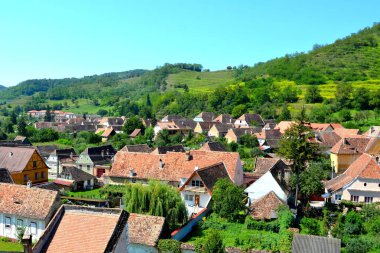
This fortified village maintains traditional European blacksmithing techniques where craftsmen still repair and reproduce medieval tools, weapons, and household items using methods that haven’t changed since the Saxon colonists established the community in the 12th century. Local workshops operate as living museums where visitors can observe traditional forging techniques while purchasing authentic reproductions of historical items or contemporary pieces that apply traditional methods to modern designs.
The village’s UNESCO World Heritage status has helped preserve both architectural heritage and traditional crafts that demonstrate how medieval communities integrated metalworking into daily life.
Like Travel Pug’s content? Follow us on MSN.
Gusinje – Montenegro
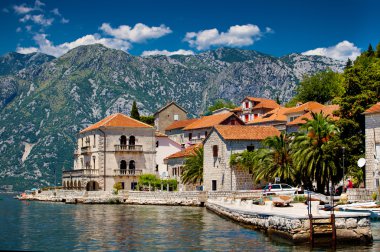
This mountain village near the Albanian border maintains traditional Balkan metalworking techniques where craftsmen create knives, tools, and decorative items that reflect the region’s warrior culture and pastoral traditions. Local workshops still use water-powered hammers along mountain streams while maintaining decorative techniques that incorporate Islamic, Orthodox Christian, and older Balkan cultural motifs into both functional and ceremonial pieces.
The village’s isolation has preserved metalworking traditions that disappeared from more accessible regions during the 20th century’s political upheavals.
Khiva – Uzbekistan

This ancient Silk Road oasis maintains traditional Central Asian metalworking where craftsmen create both practical tools and decorative items using techniques that blend Persian, Turkic, and Islamic artistic traditions. Local workshops within the historic city walls continue producing handmade knives, jewelry, and household items while training new generations in techniques that require years of apprenticeship to master completely.
The city’s UNESCO World Heritage status has created tourism markets for traditional crafts while ensuring that authentic production methods survive rather than being replaced by machine-made reproductions.
Prizren – Kosovo

This historic city maintains traditional Balkan metalworking techniques where Ottoman, Albanian, and Serbian influences created unique fusion styles that contemporary craftsmen continue developing through modern interpretations of historical designs. Local workshops produce both traditional items and contemporary pieces that apply historical techniques to modern aesthetic sensibilities, demonstrating how traditional crafts can evolve without losing their essential character or cultural significance.
The city’s metalworking heritage survived centuries of political changes through the community’s determination to preserve skills that define local cultural identity.
Like Travel Pug’s content? Follow us on MSN.
Shigaraki – Shiga Prefecture, Japan

While famous for pottery, this Japanese town also maintains traditional metalworking workshops where artisans create the specialized tools that ceramic artists require for their craft, demonstrating how different traditional arts support and enhance each other through specialized knowledge. Local blacksmiths understand the specific requirements of pottery tools, creating implements with characteristics that improve ceramic work while applying traditional Japanese metalworking techniques that emphasize both functionality and aesthetic beauty.
This specialization shows how traditional crafts create interconnected networks that preserve multiple cultural traditions simultaneously.
Where Ancient Skills Shape Modern Lives
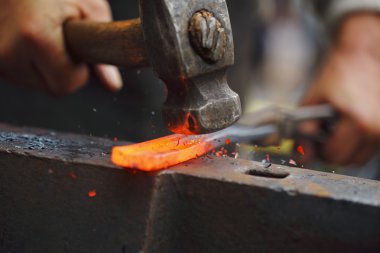
These remarkable villages demonstrate that traditional metalworking represents far more than historical curiosity—it preserves knowledge about material properties, design principles, and manufacturing techniques that modern industrial production has largely abandoned in favor of efficiency over quality. Each community maintains unique approaches to working with metal that reflect local cultural traditions, available materials, and specific functional requirements that machine production struggles to accommodate through standardized processes.
In our age of disposable goods and planned obsolescence, these blacksmith villages remind us that some objects deserve to be made with care, skill, and attention to detail that ensures they’ll serve multiple generations rather than requiring frequent replacement. The survival of these traditional communities proves that authentic craftsmanship creates value that transcends simple economic calculations, preserving cultural knowledge while producing items that honor both historical traditions and contemporary needs through techniques that connect human creativity with raw materials in ways that industrial automation cannot replicate.
More from Travel Pug

- 20 Best Beach Towns in the Carolinas
- 13 Destinations Where Tourists Regularly Regret Their Trip
- 20 Destinations That Are More Magical Without an Itinerary
- 20 Underrated Adventures That Belong on Your Travel List
- 20 Cities Where You Should Just Wing It, No Planning Required
Like Travel Pug’s content? Follow us on MSN.w us on MSN.N.
